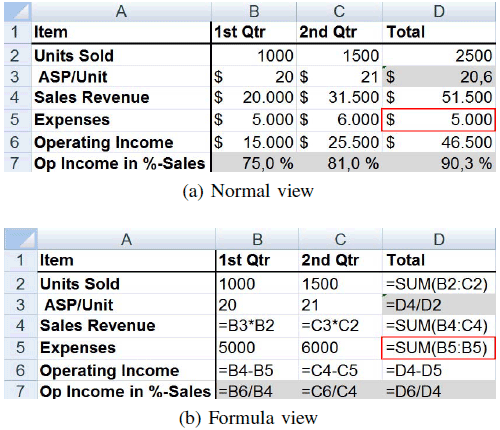Authors
Birgit Hofer & Franz Wotawa
Abstract
Spreadsheets are by far the most used programs that are written by end-users. They often build the basis for decisions in companies and governmental organizations and therefore they have a high impact on our daily life.
Ensuring correctness of spreadsheets is thus an important task. But what happens after detecting a faulty behavior? This question has not been sufficiently answered. Therefore, we focus on fault localization techniques for spreadsheets.
In this paper, we introduce a novel dependency-based approach for model-based fault localization in spreadsheets. This approach improves diagnostic accuracy while keeping computation times short, thus making the automated fault localization more appropriate for practical applications.
The presented approach allows for an acceptable fault localization time of less than a second, and reduces the number of computed root cause candidates by 15% on average, when compared with another dependency-based approach.
Sample

This spreadsheet is a simplified version of the "homework / budgetone" spreadsheet from the EUSES spreadsheet corpus. For demonstration purposes, we manually inserted a fault in cell D5.
Publication
2014, IEEE 25th International Symposium on Software Reliability Engineering (ISSRE), November, pages 112-121
